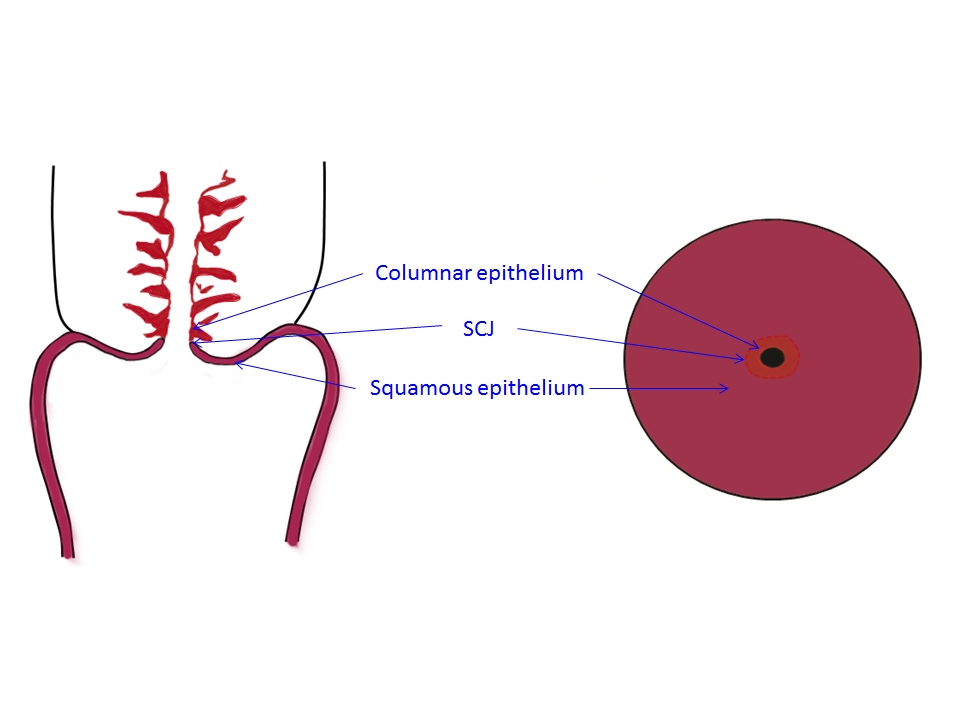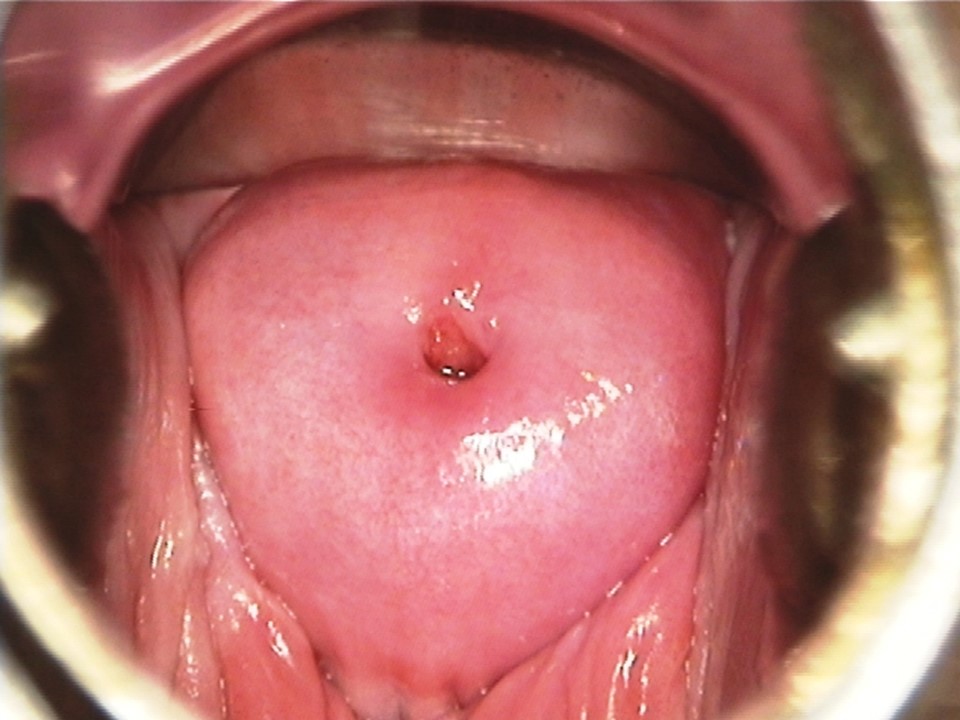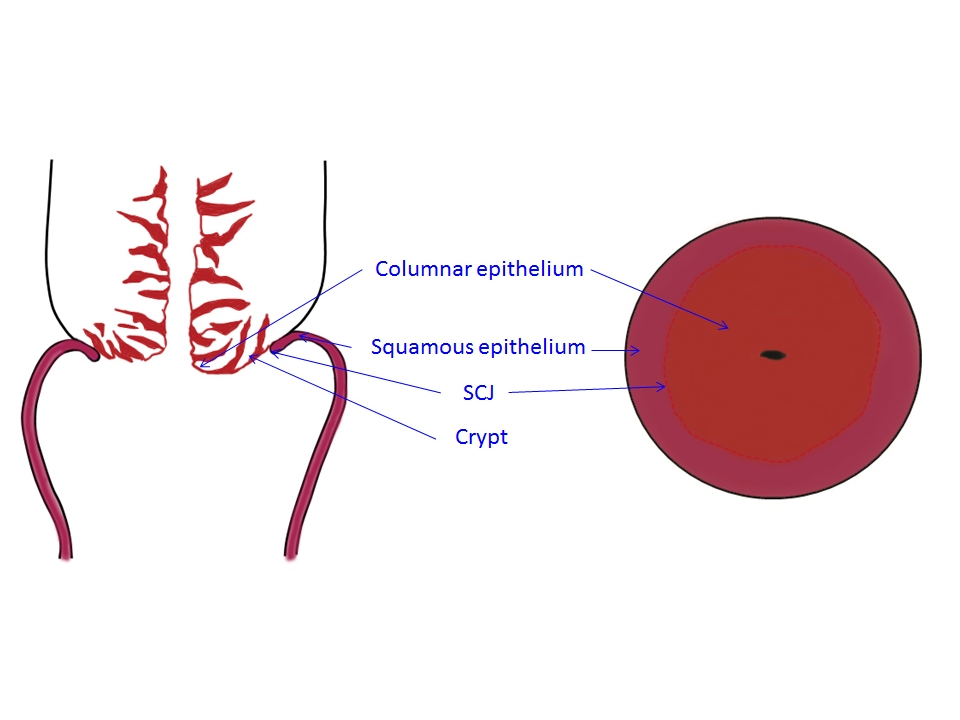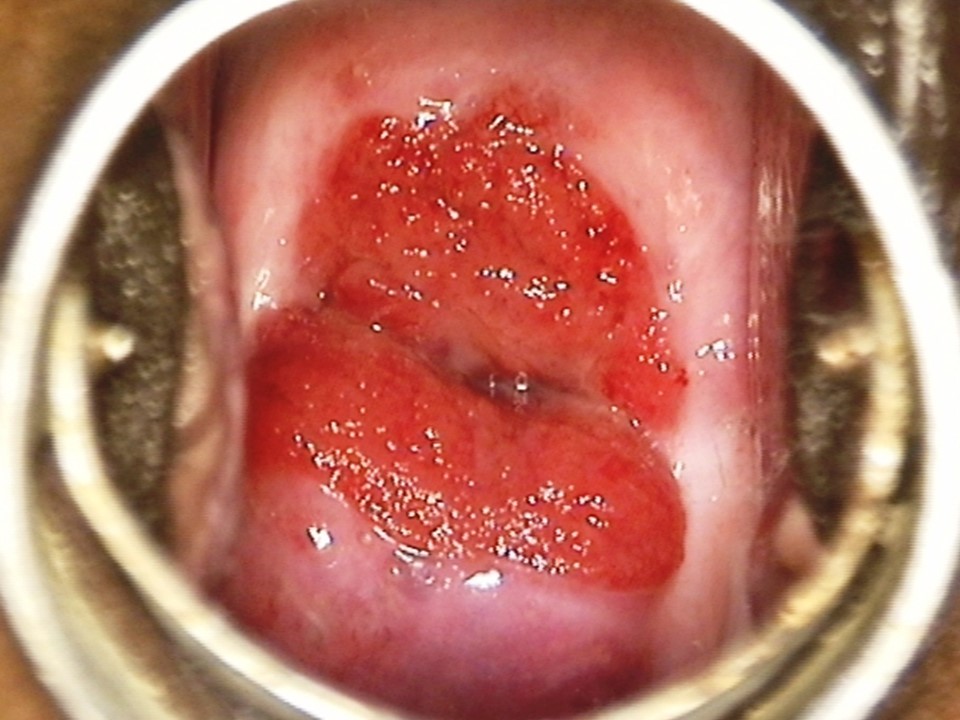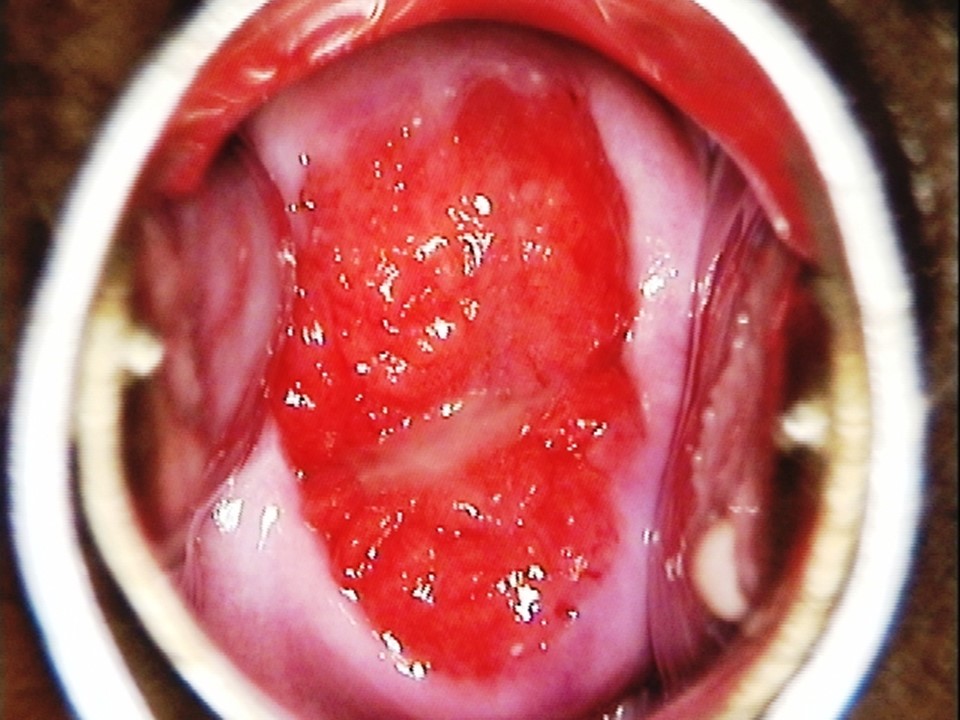Atlas of visual inspection of the cervix with acetic acid for screening, triage, and assessment for treatment / Activity 1
Physiological changes of the cervical epithelium – Ectropion |
There are many normal variations (also known as physiological changes) of the cervix, which are essentially due to changes in the hormonal status in women. It is important for the VIA provider to identify these conditions and distinguish physiological variations from abnormal features of the cervix. At menarche (the onset of menstruation) and during the early reproductive period, the female genital organs develop under the influence of the hormone estrogen. The cervical epithelium undergoes gradual changes that can be seen on examination of the cervix. During childhood and until menarche: The ectocervix is almost completely covered by squamous epithelium and the SCJ lies close to the external os. At menarche and during the reproductive period: The cervix enlarges under the influence of estrogen, leading to eversion of the columnar epithelium out onto the ectocervix. As a result, the SCJ relocates and lies on the ectocervix at a variable distance from the external os. This condition, in which the columnar epithelium is present on the ectocervix, is known as ectropion or ectopy. Ectropion is visible as a red velvety patch of variable size on the ectocervix around the external os. Because ectropion is a physiological condition, it does not require any treatment and disappears on its own with advancing age. The woman may complain of excessive mucoid vaginal discharge and/or slight bleeding (spotting) after intercourse. The next section discusses further changes of the cervical epithelium that occur with advancing age. |
Click on the pictures to magnify and display the legends
